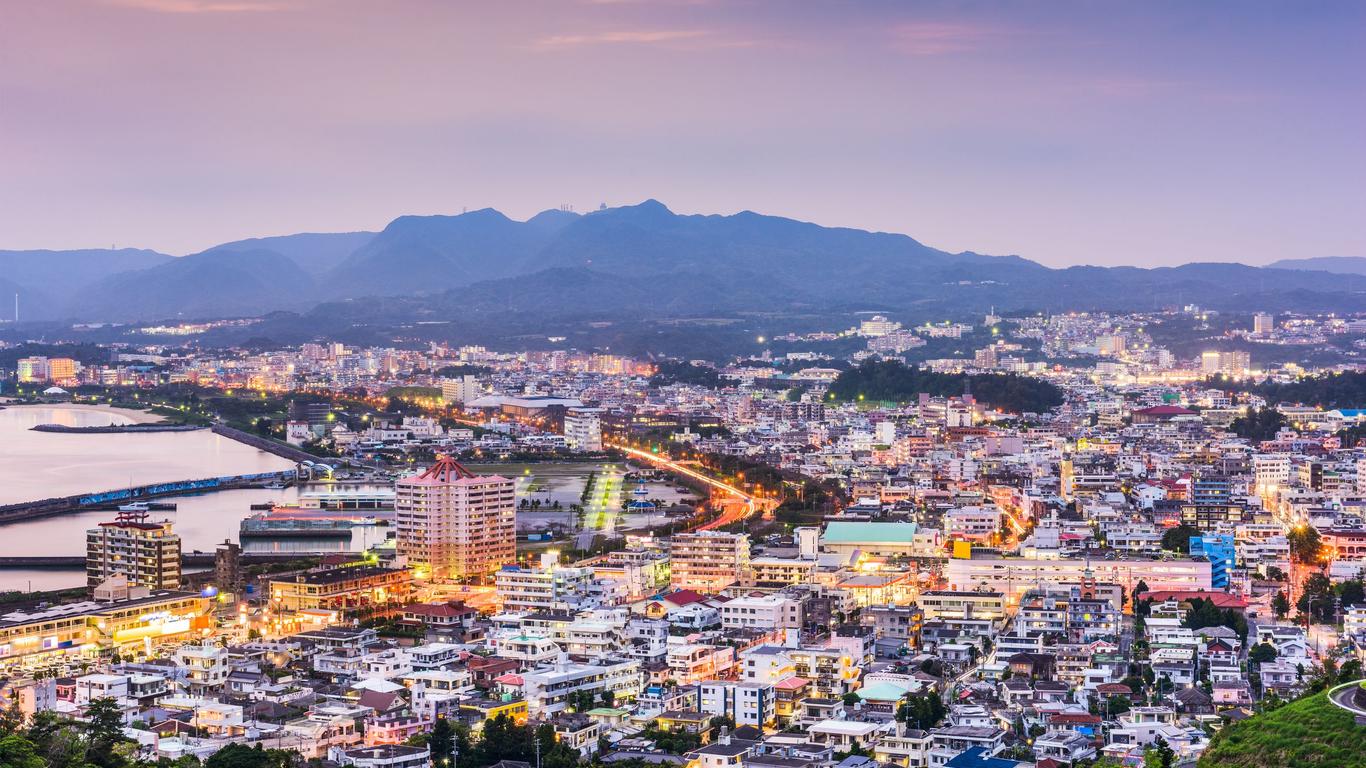Okinawa Islands is the largest in both the Okinawa and the Ryukyu archipelagos which scatter across the East China Sea between Japan and Taiwan. It’s renowned for its tropical white sandy beaches, coral reefs, lush mountainous interior, and high density of World War II sites as the location of the Battle of Okinawa.
The capital of Okinawa Islands is Naha, situated in the southwestern part of the island and home to the majority of its population. It’s here that the former royal palace of the Ryukyu Kingdom stands, Shuri Castle, which reigned between the 15th and 19th centuries and is noted as the birthplace of karate. Its main street of Kokusaidori is lined with boutiques, cafes and bars, although much of the city’s original historic buildings were destroyed during the Battle of Okinawa, with those who lost their lives honoured at the Okinawa Peace Memorial Museum. Okinawa is also home to the Churaumi Aquarium, noted for its immense Kuroshio Tank and part of the larger Ocean Expo Park, together with the cultural theme park of Okinawa World. One of the most sacred sites of the indigenous Okinawan religion can be visited at Sefa Utaki, or visitors can explore the ancient Ryukyu castle ruins scattered throughout the island’s architectural interior at Nakagusuku, Zakimi and Nakijin. The Tsuboya district of Okinawa has been famed for its pottery since the Ryukyu Kingdom era and boasts a high concentration of pottery workshops where visitors can purchase ceramics, together with a museum detailing its history.
Except for the monorail which services central Naha, public transportation on Okinawa is limited to buses, with numerous services which connect the towns and villages around the island. For those who want to explore, particularly through the mountainous interior, hiring a car or motorbike offers far more flexibility. There are also ferry services between the main island of Okinawa and outlying islands.
Although shell middens indicate the presence of humans on Okinawa as far back as the Jōmon period around 12,000 BC, it wasn’t until around the 12th century that an agricultural society emerged and many distinct gusuku-style castles and fortresses were built. It was during this time that porcelain trade became a significant industry throughout the region and in 1429 the Ryukyu Kingdom was founded with its capital at Shuri Castle.





